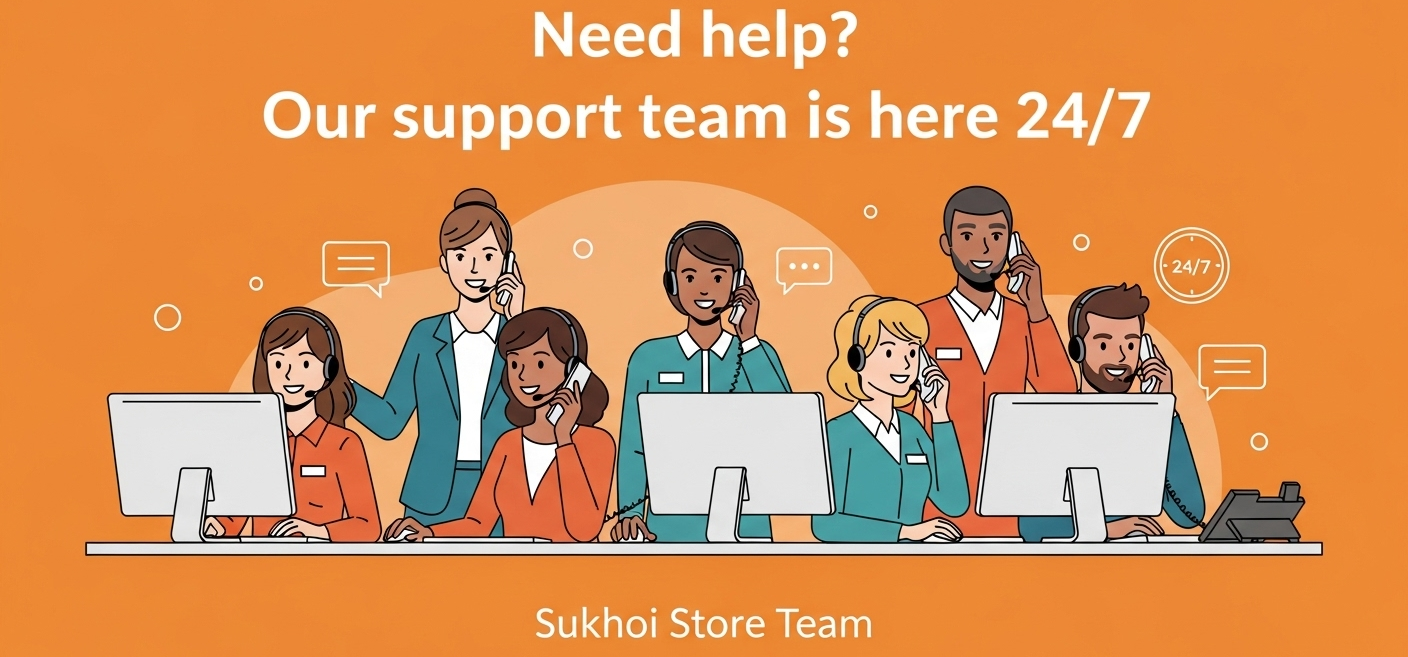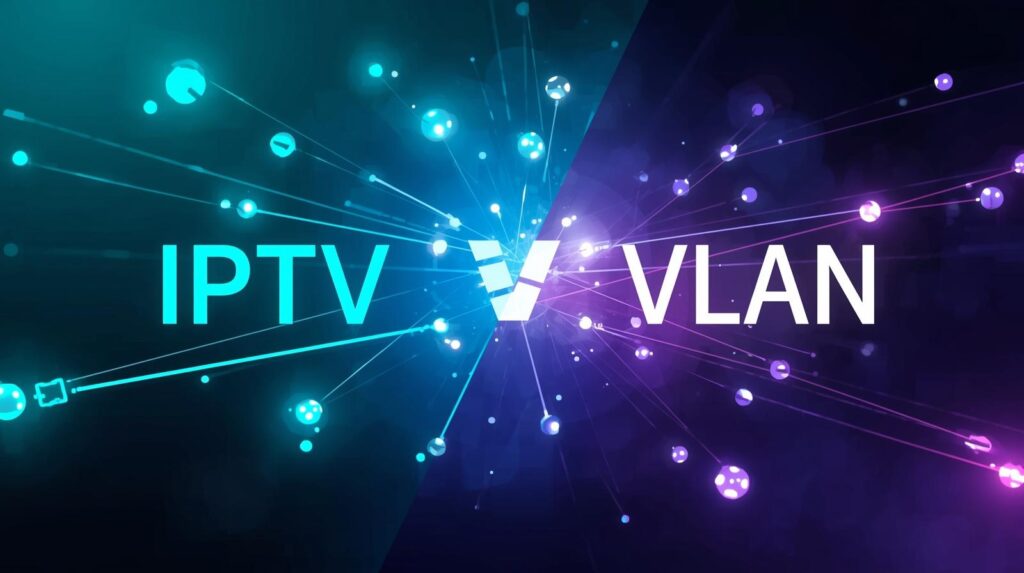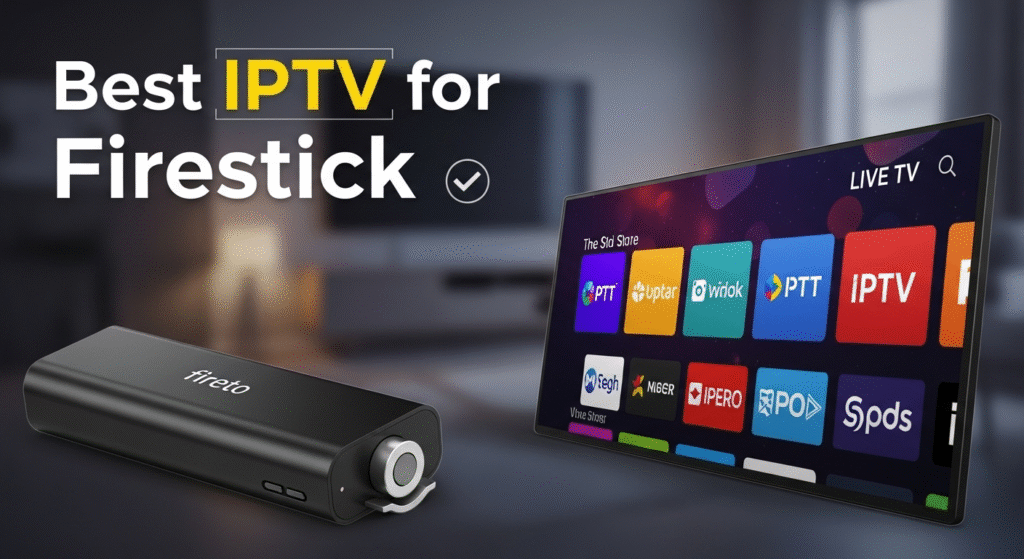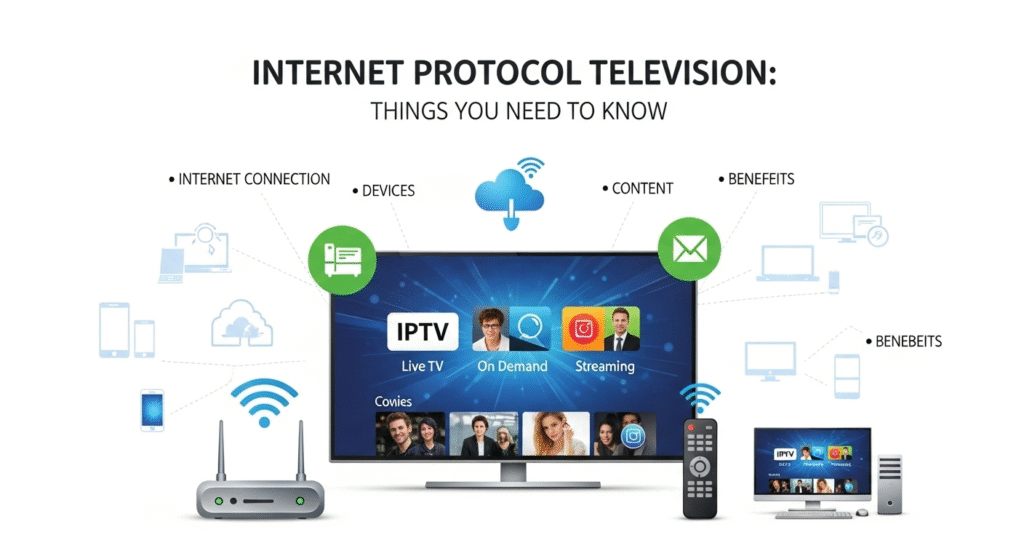
So, you’ve probably noticed that everyone and their grandma is ditching cable these days, right? Well, there’s a good reason for that. Internet protocol television is changing the game, and honestly, once you try it, you’ll wonder why you didn’t make the switch sooner.
Remember when we all had to rush home to catch our favorite shows at 8 PM sharp? Yeah, those days are pretty much over. With internet protocol television, you’re the boss of your TV schedule. You watch what you want, when you want, and where you want. Pretty sweet deal, if you ask me.
The best part? You don’t need to be a tech wizard to figure this stuff out. As long as you’ve got decent internet (and let’s be real, who doesn’t these days?), you’re good to go. Let’s dive into what makes IPTV so awesome and why it might be time to break up with your cable company.
Table of Contents
ToggleWhat’s Internet Protocol Television, Anyway?
Okay, so internet protocol television sounds super technical, but it’s actually pretty straightforward. Instead of getting your TV through those old-school cables or satellite dishes, you’re streaming everything through your internet connection. That’s literally it.
Think of it this way: traditional TV is like a firehose blasting every channel at you all at once, and you just pick which one to tune into. IPTV is more like ordering exactly what you want from a menu. You click on a show, and boom—that specific stream comes to your device. It’s way more efficient and gives you tons more control.
The Basic Stuff You Need to Know
| Part | What It Does | Why You Care |
|---|---|---|
| Content Sources | All your shows, movies, and live channels | This is where the good stuff comes from |
| Encoding Servers | Makes videos smaller so they stream smoothly | Keeps things from buffering every 5 seconds |
| Content Delivery Networks | Gets content to you fast | The reason your show doesn’t lag |
| Middleware Platform | The interface you actually see and use | Makes everything easy to navigate |
| Your Devices | TVs, phones, tablets, whatever | How you actually watch stuff |
Three Ways IPTV Works
Live TV This is just like regular TV but through the internet. Sports, news, live events—all happening in real-time. Perfect for when you absolutely can’t miss that big game.
Video on Demand (VOD) This is where IPTV really shines. It’s basically Netflix-style viewing—huge libraries of movies and shows you can watch whenever you feel like it. No schedules, no waiting, just instant entertainment.
Time-Shifted Stuff Missed your show last night? No worries. Most services let you go back and catch up on recent episodes. It’s like having a DVR built right into the service.
How We Got Here (The Not-So-Boring History)
Back in the ’90s, streaming TV seemed like science fiction. Early digital TV was a bandwidth hog—we’re talking 200 Mbps just to send one channel. That’s insane by today’s standards.
But then some smart folks figured out compression technology, and suddenly you could stream decent quality video at just 2 Mbps. Game changer! Around 1995, companies started experimenting with sending TV over the internet, and honestly, it was pretty rough at first.
The Journey to Modern Streaming
| Year | What Happened | Why It Mattered |
|---|---|---|
| 1995 | First attempts at IP-based TV | Proof it could actually work |
| 1998 | First real IPTV service in the US | People could actually subscribe |
| 2005 | HD IPTV channels arrived | Finally looked as good as cable |
| 2010 | Smart TVs everywhere | No extra boxes needed anymore |
| 2015 | More people using IPTV than satellite in Europe | The tipping point |
| 2020+ | 4K IPTV becomes normal | Crystal clear, cinema-quality at home |
Fast forward to today, and we’ve got fiber internet that can handle 4K IPTV without breaking a sweat. It’s come a long way from those choppy, pixelated streams of the early days.
The Techy Stuff (But I’ll Keep It Simple)
Don’t worry, I’m not gonna bore you with technical jargon. But it’s kinda cool to understand how this all works behind the scenes.
How Content Gets to You
So your IPTV service provider basically grabs content from studios and TV networks, compresses it down so it doesn’t eat up all your bandwidth, and then sends it through the internet to your device. Simple enough, right?
Here’s the clever part: they use something called content delivery networks (CDNs). These are basically servers spread all over the place that store copies of popular content. When you click play, you’re getting it from the server closest to you, not from some data center halfway across the country. That’s why your streams start quickly and don’t buffer constantly.
Two Ways They Send You Stuff
| Method | How It Works | Best For |
|---|---|---|
| Multicast | One stream reaches tons of people at once | Live sports, big events |
| Unicast | You get your own personal stream | On-demand shows and movies |
| Hybrid | Mix of both depending on what you’re watching | Smart services that optimize everything |
The Magic of Adaptive Streaming
Ever notice how sometimes your video looks a bit fuzzy for a few seconds, then clears up? That’s adaptive streaming doing its thing. The system constantly checks your internet speed and adjusts the quality automatically. Slow connection? It drops to SD to keep playing. Fast connection? Hello, crystal-clear HD! It all happens in the background so you don’t even notice.
Who’s Using IPTV? (Spoiler: Everyone)
Internet protocol television isn’t just for binge-watching shows on your couch anymore. It’s popping up everywhere, and some uses are actually pretty clever.
At Home (Obviously)
This is where most of us use it. You’ve got access to thousands of channels, massive movie libraries, and all your favorite shows. The cool part? Everyone in your house can watch different things on different devices without fighting over the remote. Dad’s watching football in the living room, kids are streaming cartoons on the tablet, and you’re catching up on that series in bed. Perfect harmony.
Hotels and Resorts
Ever stayed at a nice hotel and noticed their fancy TV system? That’s probably IPTV. You can order room service, check out local attractions, and watch movies—all from your TV. Way better than those ancient hotel cable systems with 12 channels of nothing.
At Work
Companies use IPTV for training videos, company-wide announcements, and virtual meetings. Beats flying everyone to headquarters for a meeting, right? Plus, you can watch training videos whenever you actually have time, not just during some scheduled session.
Schools and Universities
Professors can livestream lectures, students can re-watch classes they missed (or slept through—no judgment), and everyone stays in the loop with campus announcements. It’s especially handy for online courses.
Hospitals
Patients get educational videos about their treatments and entertainment to pass the time. Medical staff can access training materials and conferences without leaving the building. Pretty smart use of the technology.
Comparing IPTV Providers (The Good, The Better, and The “Wow That’s Cheap”)
Alright, let’s talk options. There are tons of IPTV providers out there, and they’re all fighting for your attention with different features and prices.
The Main Players
| Type | 📺 Examples | 💡 What You Get & Who It’s For |
|---|---|---|
| Premium Live TV | YouTube TV, Hulu + Live TV | 85+ channels, DVR, sports · People who want cable but better |
| Budget-Friendly | Philo, Sling TV | 30-50 channels, low prices · Folks watching their wallet |
| Sports Heaven | FuboTV, ESPN+ | All the sports, all the time · Die-hard sports fans |
| Free Stuff | Pluto TV, Roku Channel | Ad-supported, costs nothing · Casual viewers on a budget |
| Studio Originals | Peacock, Paramount+ | Exclusive shows, studio libraries · Fans of specific networks |
How Much Does This Cost?
Here’s the thing—most IPTV services don’t lock you into contracts. You can cancel anytime without penalty fees or angry phone calls with customer service. Try that with your cable company!
Prices usually start around $25-40 a month for basic packages. Want premium channels or sports? Add-ons are available, but you only pay for what you actually want. No more paying for 200 channels when you only watch 10.
What About 4K IPTV?
If you’ve got a fancy 4K TV, you’re in luck. More and more providers are offering ultra-HD content. But here’s the catch—you need solid internet for 4K IPTV. We’re talking 25 Mbps minimum, and honestly, 50 Mbps is better if you’ve got multiple people streaming at once. Otherwise, you’ll be watching that spinning buffer wheel more than your actual show.
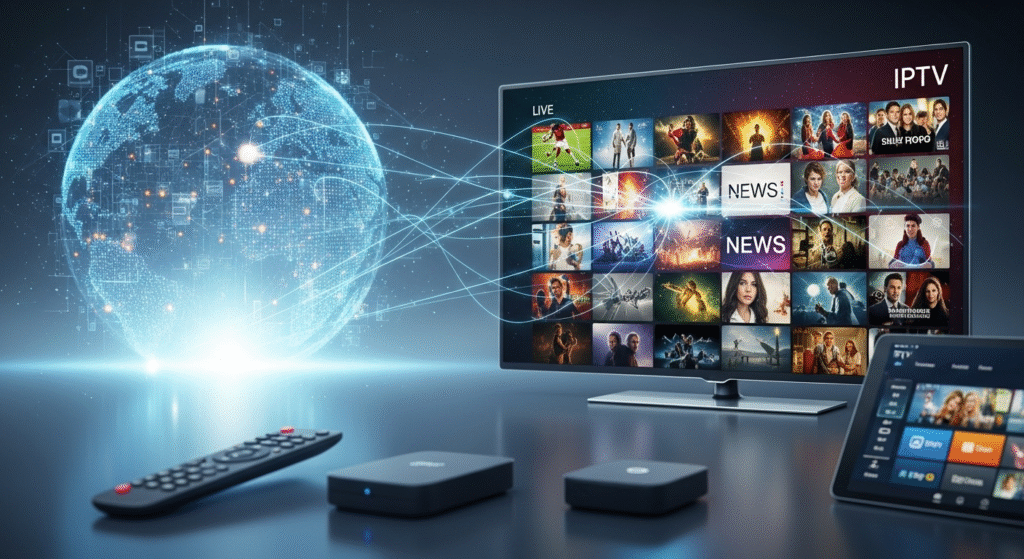
Why IPTV is Honestly Just Better
Okay, I might be a bit biased here, but let me tell you why internet protocol television beats traditional cable hands down.
So. Much. Content.
We’re talking thousands of channels and on-demand titles. Whatever you’re into—sports, documentaries, reality TV, foreign films, cooking shows—it’s all there. And unlike cable packages where you get stuck with channels you’ll never watch, you can actually pick what matters to you.
Want to watch TV shows from other countries? Done. Learning a new language and want to watch native content? Easy. Missing home and want channels from your birth country? No problem. IPTV breaks down all those geographic barriers.
Watch on Your Schedule, Not Theirs
This is huge. No more planning your life around TV schedules. That show you love airs at 2 AM? Who cares! Watch it at a reasonable hour. Have a weird work schedule? Doesn’t matter—your shows will wait for you.
Plus, pause live TV when someone rings the doorbell, rewind if you missed something, or fast-forward through the boring parts. It’s your TV, you’re in control.
It Actually Looks Amazing
Most IPTV services stream in HD as standard, and 4K IPTV is becoming super common. The picture quality is consistently good because it’s digital—no fuzzy signals or weather interference like the old days. Some services even support Dolby Atmos sound, which is basically theater-quality audio in your living room.
Your Wallet Will Thank You
Let’s talk money. Cable bills are ridiculous—often $100+ a month with all those sneaky fees. IPTV services? Usually $25-$70 depending on what you want. Plus, no equipment rental fees, no installation charges, no “broadcast TV fees” or whatever other nonsense cable companies tack on.
Do the math: you could save $50-$80 every single month. That’s like $600-$960 a year! Think about what else you could do with that money.
Watch Anywhere on Anything
Start watching on your TV, continue on your tablet while you’re making dinner, finish on your phone in bed. Most services let multiple people stream at the same time, so everyone’s happy. No more family arguments about who gets to watch what.
The Not-So-Great Parts (Yeah, There Are Some)
Look, I love IPTV, but let’s be real—it’s not perfect. Here’s what you should know before cutting that cable cord.
You’re Tied to Your Internet
This is the big one. If your internet goes down, so does your TV. Unlike cable that works independently, IPTV needs that connection to function. If you live somewhere with spotty internet, this might be a dealbreaker.
Also, streaming eats data. An hour of HD video uses about 3 GB, and 4K IPTV gobbles up around 7 GB per hour. If your internet provider has data caps, heavy streaming could cost you extra. Definitely something to consider.
Not Every Channel Made the Cut
While IPTV services have tons of content, some specific channels—especially regional sports networks—might not be available on every service. Check if your must-have channels are included before you subscribe. Nothing worse than signing up and realizing you can’t watch your local team.
Watch Out for Sketchy Services
Here’s where you gotta be careful. There are legit IPTV providers who pay for content rights, and then there are shady operations offering “everything for $10/month!” Those cheap services are usually pirating content, which is illegal and could get you in trouble. Stick with reputable names—if the deal sounds too good to be true, it probably is.
You Might Need Extra Gear
Got a newer smart TV? You’re probably fine—most have apps built in. But if your TV is older, you’ll need a streaming device like a Roku, Fire Stick, or Apple TV. They’re not expensive (usually $30-$100), but it’s an upfront cost to factor in.
What’s Coming Next (The Cool Future Stuff)
IPTV is already awesome, but it’s getting even better. Here’s what’s on the horizon.
TV That Knows What You Want
AI is getting scary good at recommendations. Future systems will learn your viewing habits so well that they’ll suggest shows you didn’t even know you’d love. The interface will adapt to your preferences—imagine your TV automatically highlighting your favorite sports team’s games or new episodes of shows you’re hooked on.
More Than Just Watching
Interactive features are coming big time. Imagine shopping for that jacket you saw on a character by clicking your remote, or participating in live polls during shows, or exploring behind-the-scenes content without leaving what you’re watching. Second-screen experiences will sync perfectly with what’s on your main TV.
Virtual Reality Integration
Okay, this is where it gets futuristic. Imagine watching a basketball game from courtside—at home. Or exploring a documentary’s locations in 360 degrees. VR and AR are gonna transform how we think about “watching TV.”
Even Better Quality
8K streaming is coming (because apparently 4K wasn’t enough). New compression tech means better quality at lower bandwidth. HDR is getting more advanced too, making colors pop and blacks look truly black.
5G Changes Everything
When 5G becomes standard everywhere, you’ll be able to stream 4K IPTV on your phone anywhere without WiFi—no buffering, no quality drops. This is gonna make mobile viewing just as good as watching at home.
Your Questions Answered
What exactly is internet protocol television and is it different from Netflix?
Great question! Internet protocol television is basically TV delivered through your internet connection. While Netflix counts as streaming, IPTV usually refers to services that offer live TV channels plus on-demand stuff—more like cable but through the internet. Netflix is just on-demand movies and shows. IPTV gives you the whole package: live channels, catch-up TV, and on-demand libraries all in one place.
Do I need to buy special equipment?
Depends on your TV. Got a smart TV made in the last few years? You probably don’t need anything—just download the app. Older TV? You’ll need a streaming device like a Roku, Fire Stick, or Apple TV. They’re pretty cheap (like $30-$100) and super easy to set up. Oh, and obviously you need decent internet—at least 5 Mbps for basic stuff, 25+ Mbps for 4K IPTV.
How fast does my internet need to be for 4K IPTV?
For smooth 4K IPTV streaming, you want at least 25 Mbps per stream. But here’s the thing—if multiple people are streaming at once, you need more. Two people watching 4K? You need 50 Mbps. Three people? 75 Mbps. And that’s just for streaming—you probably want extra for browsing, gaming, whatever else. Honestly, if you’re serious about 4K, get the fastest internet you can afford. It’s worth it.
Are all IPTV services legal?
Legit services like YouTube TV, Hulu + Live TV, Sling—totally legal. They pay for content rights and everything. But watch out for sketchy services advertising “10,000 channels for $10/month!” Those are usually pirating content, which is definitely illegal. If the price seems ridiculously cheap and they’re offering everything under the sun, it’s probably illegal. Stick with well-known names and you’re fine.
Can multiple people watch different things at once?
Yep! Most IPTV providers let you stream on multiple devices simultaneously. The exact number varies—usually 2-5 streams at once depending on your plan. Premium plans usually give you more. So yeah, everyone in the house can watch their own thing without fighting. Finally, peace in the family!
What happens if my internet crashes?
Unfortunately, no internet means no TV. That’s the main downside of internet protocol television—you’re completely dependent on your connection. If your internet goes out, you’re stuck. This is worth thinking about, especially if you live somewhere with unreliable service. Maybe keep one of those old-fashioned antennas around for emergencies?
Is IPTV actually cheaper than cable?
Oh absolutely! Cable bills are brutal—often $100-$150+ a month with all their sneaky fees. IPTV services usually run $25-$70 depending on what you get. No equipment rentals, no installation fees, no “regional sports fee” or whatever other garbage cable companies charge. You could easily save $500-$1000 a year. That’s a nice vacation right there!
Is the quality better than cable?
When your internet is good, IPTV quality matches or beats cable easily. Both are digital, so picture quality is solid. The big advantage with IPTV is that 4K streaming is becoming standard, while many cable companies still don’t offer it. The only catch is that IPTV quality depends on your internet speed. If your connection slows down, quality might drop. Cable stays consistent regardless of your internet.
Can I record shows like with a cable DVR?
Yep! Most IPTV services have cloud DVR built in. It’s actually better than those old cable DVR boxes because storage is in the cloud—no hard drive filling up. Some services give you unlimited recording (though they might delete stuff after 30-90 days). You can usually set entire series to record automatically and watch recordings from any device. Pretty slick.
What’s the difference between an IPTV service provider and just an IPTV app?
The IPTV service provider is the company actually providing the content—like YouTube TV or Hulu. They’re the ones with licenses to stream channels and shows. An IPTV app is just the software you use to watch—like the YouTube TV app on your phone. Focus on picking a good IPTV service provider first, then just use their official app. Easy peasy.
Have Questions? We're Here to Help with IPTV!
